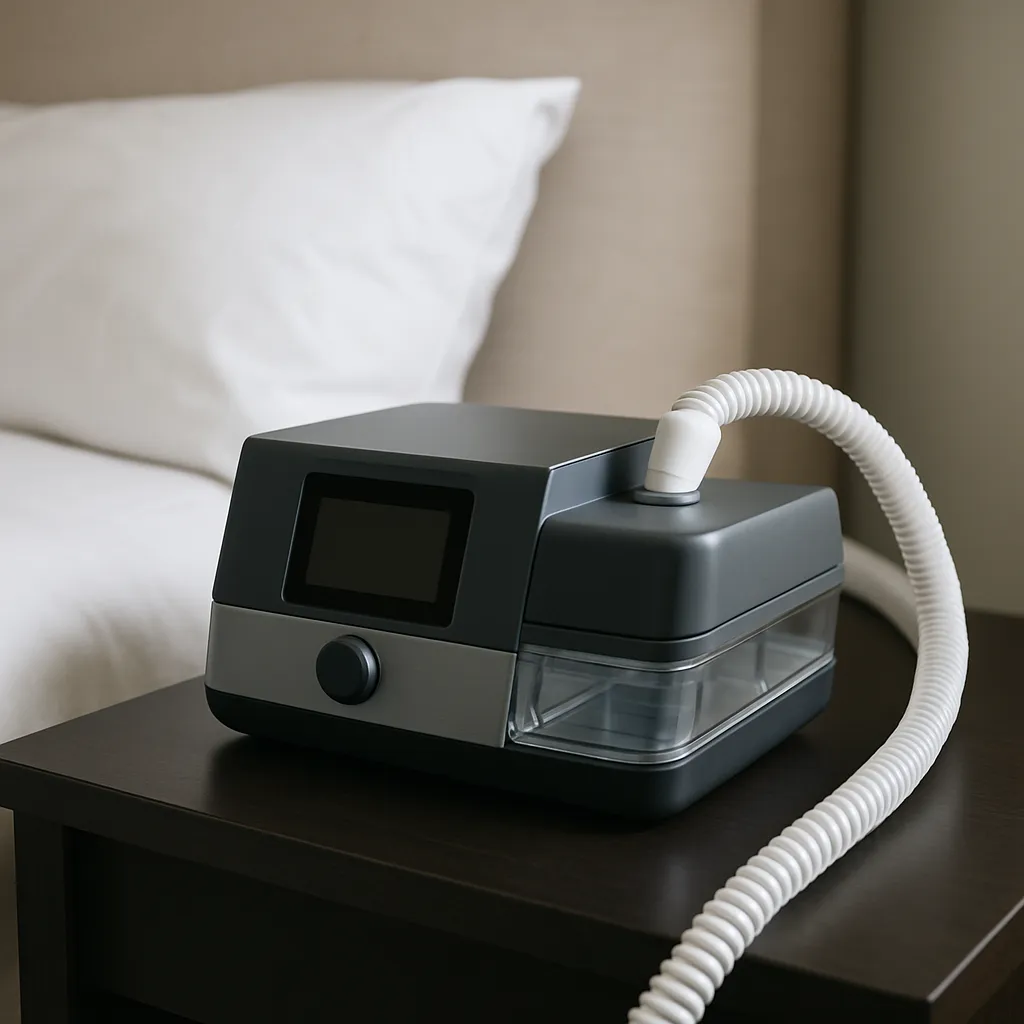CPAP Therapy: Your Complete Guide to Sleep Apnea Treatment Success
Published Date: June 15, 2025
For the millions of people diagnosed with sleep apnea, CPAP (Continuous Positive Airway Pressure) therapy represents a life-changing treatment option. This gold standard in sleep apnea treatment has helped countless individuals reclaim their nights and transform their days. If you've recently been prescribed CPAP therapy or are considering it as a sleep solution, understanding how it works and what to expect can make all the difference in your treatment success.
Understanding CPAP Technology
CPAP therapy works by delivering a continuous stream of pressurized air through a mask that covers your nose, mouth, or both. This gentle air pressure keeps your airway open throughout the night, preventing the collapses that cause breathing interruptions during sleep. Modern CPAP machines are sophisticated devices equipped with advanced features like automatic pressure adjustments, humidification systems, and data tracking capabilities that help optimize your sleep therapy.
The technology has evolved significantly over the years. Today's CPAP machines are quieter, more comfortable, and more user-friendly than ever before. Many models include smart features that can adjust pressure automatically based on your breathing patterns, ensuring optimal therapy throughout the night. This sleep technology advancement has made CPAP therapy more effective and tolerable for users.
 CPAP Machine
CPAP Machine
Figure 1: A modern CPAP machine representing advanced sleep technology for effective treatment.
Getting Started: What to Expect
Beginning CPAP therapy can feel overwhelming, but with proper guidance and patience, most people adapt successfully. Your sleep specialist will work with you to determine the correct pressure settings and help you choose the right mask style. There are several mask options available, including nasal masks, full-face masks, and nasal pillows, each designed to accommodate different sleeping positions and comfort preferences.
The initial adjustment period typically lasts a few weeks. During this time, you might experience some minor side effects such as dry mouth, nasal congestion, or skin irritation from the mask. These issues are usually temporary and can be addressed with proper mask fitting, humidification, and gradual adaptation to wearing the device. Your healthcare provider will monitor your progress and make necessary adjustments to ensure optimal comfort and effectiveness.
Maximizing Your CPAP Success
Success with CPAP therapy depends largely on consistent use and proper maintenance. Here are key strategies for maximizing your treatment benefits:
Consistency is Key: Use your CPAP machine every night, even during naps. Consistent use helps your body adapt to the therapy and ensures you receive the full benefits of treatment. Most insurance companies require at least 4 hours of use per night for coverage, but optimal benefits come from using the device for your entire sleep period.
Proper Mask Fit: A well-fitting mask is crucial for effective therapy and comfort. Work with your equipment provider to find the right size and style. The mask should create a good seal without being too tight, and you should be able to move naturally during sleep without significant air leaks.
Regular Maintenance: Keep your equipment clean and replace components as recommended. Daily cleaning of the mask and weekly cleaning of the tubing and humidifier chamber help prevent infections and ensure optimal performance. Replace filters, masks, and tubing according to manufacturer guidelines.
 CPAP Success
CPAP Success
Figure 2: Waking up refreshed and energetic after successful CPAP therapy.
Overcoming Common Challenges
Many CPAP users face initial challenges, but most can be overcome with proper support and adjustments. Common issues include:
Mask Discomfort: If your mask feels uncomfortable, don't suffer in silence. Different mask styles and sizes are available, and your equipment provider can help you find a better fit. Some people benefit from mask liners or different headgear styles.
Dry Mouth or Nasal Congestion: These issues often resolve with the use of a heated humidifier, which adds moisture to the air delivered by your CPAP machine. Adjusting the humidity level can significantly improve comfort.
Feeling Claustrophobic: Some people feel anxious about wearing a mask. Gradual adaptation, starting with wearing the mask while awake, can help. Relaxation techniques and working with a sleep therapist may also be beneficial.
Air Pressure Discomfort: If the pressure feels too strong, talk to your sleep specialist about pressure relief features or ramp settings that gradually increase pressure as you fall asleep.
The Life-Changing Benefits
When used consistently, CPAP therapy can dramatically improve your quality of life. Users often report:
Improved Sleep Quality: With your airway kept open, you'll experience deeper, more restful sleep without the frequent awakenings caused by breathing interruptions.
Increased Daytime Energy: Better sleep translates to improved daily energy and alertness. Many users report feeling more refreshed and productive during the day.
Better Mood and Cognitive Function: Quality sleep improves emotional regulation, memory, and concentration. You may notice improvements in your relationships and work performance.
Reduced Health Risks: CPAP therapy can help lower blood pressure, reduce the risk of heart problems, and improve overall cardiovascular health.
Partner Benefits: Your bed partner will also benefit from quieter, more peaceful nights without the disruption of loud snoring and breathing interruptions.
 CPAP Benefits
CPAP Benefits
Figure 3: A doctor consulting with a patient about CPAP therapy and sleep study results.
Working with Your Healthcare Team
Success with CPAP therapy is a collaborative effort between you and your healthcare team. Regular follow-up appointments with your sleep specialist are important for monitoring your progress and making necessary adjustments. Many modern CPAP machines have wireless connectivity that allows your healthcare provider to monitor your usage and therapy effectiveness remotely.
Don't hesitate to communicate any concerns or challenges you're experiencing. Your healthcare team is there to support you and can often provide solutions to improve your comfort and therapy effectiveness. Remember, CPAP therapy is a long-term treatment, and finding the right setup may take time and patience.
CPAP therapy has transformed the lives of millions of people with sleep apnea. With proper support, education, and commitment, you too can experience the profound benefits of effective sleep apnea treatment and enjoy the healthy sleep you deserve.
Related Articles
- Tracking Your Sleep with Technology: A Step-by-Step Guide
- Understanding Your Sleep Patterns with Self-Test Questionnaires
- Sleep Apnea Machine: Complete CPAP Therapy Guide
